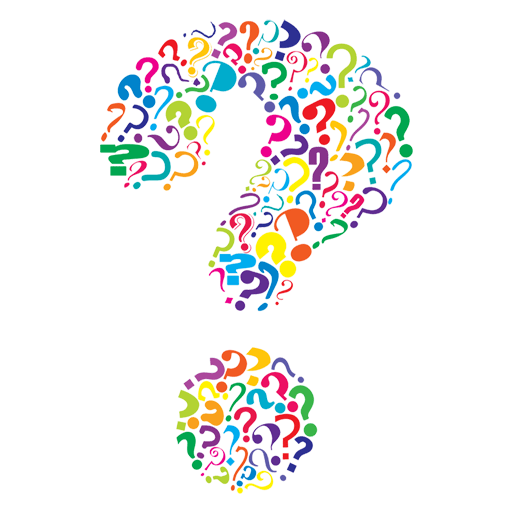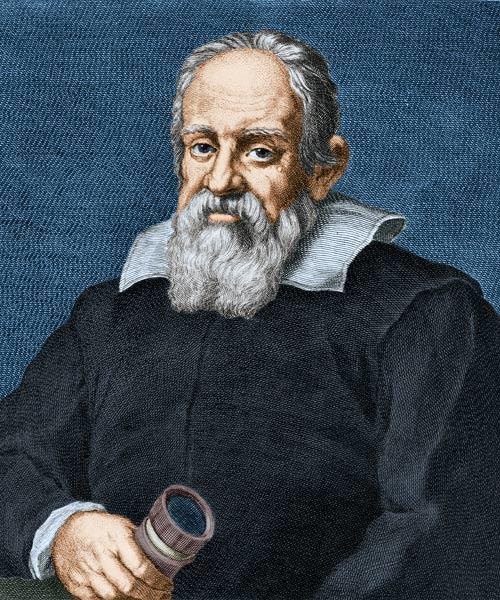On 7th January 1610, the astronomer Galileo Galilei turned his newly built telescope on a speck of light moving slowly across the clear night sky above the Italian town of Padua.
The dot he stared at was the planet Jupiter.
To Galileo’s astonishment, the planet was attended by what he saw as ‘four little stars’. They were in fact moons, in orbit around their giant companion.
The sight, at once, challenged the traditional Church dominated concept of the universe, in which all heavenly bodies were believed to circle the Earth.
Galileo’s discoveries were to lead to a full-scale confrontation between the Church and a revolutionary new view of the universe.
Orthodox beliefs about the nature of the universe were rigid and long established. For some 300 years, the Catholic Church and universities had accepted the theories proposed by the ancient Greeks.
In particular the beliefs about the universe held by Aristotle and Ptolemy. According to them the Earth lay fixed at the centre of the universe, with the heavenly bodies moving around it. Since no one could see flaws in the Moon, planets and stars, they were considered to be models of perfection, which revolved in circles, the most perfect of shapes.
The Church seized upon the Greek view as backing for its ‘divine’ mission – to help sinful humanity towards heavenly perfection. In support of this two beliefs were vital.
Firstly, the heavens should always be seen as perfect and secondly, the Earth on which mankind dwelt must be the stable centre of all things. Consequently, the theories that had been advanced by Aristotle ad Ptolemy supporting this concept became religious dogma.
By Galileo’s time, this dogma looked a little threadbare. A Polish priest and mathematician named Nicholas Copernicus had in 1543 suggested that planetary motions could be more readily accounted for if the Sun was placed at the centre of things.
In 1600, a radical Italian thinker, Giordano Bruno, was burnt at the stake for his heresies, one of which was his insistence that the Earth moved around the Sun. Galileo knew what he was up against, but he also knew the strength of his own scientific expertise.
In 1582, at the age of 18, Galileo had already begun the work that later led him to formulate several basic laws of motion.
Then in 1609, when he was a Professor of Mathematics at Padua, he heard of a Dutch spectacle maker, Hans Lippershey, who had put two lenses in a tube to make a primitive telescope.
Galileo made one for himself, which magnified just three times. He bought it to Venice, and sold the idea to the Venetian leader, the Doge, for it’s military potential – with a telescope, ships could be identified from a greater distance.
Within months, Galileo had made a second and a third telescope, which magnified up to 32 times.
It was this third, improved telescope that Galileo was to turn upon the skies in 1609-10. Discoveries came rapidly, each of them a further challenge to religious dogma.
For instance, he discovered there was nothing perfect about the surface of the moon – it had craters, mountains and plains.
The Sun, so far considered ‘inviolate’ had spots on it and Jupiter had its own moons, which did not circle the Earth.
Venus had phases, from full to new, which would have been impossible unless it was in orbit around the Sun, rather than around the Earth. Also, many previously unseen stars were now in view by the thousands.
Therefore, Galileo’s telescope showed convincing evidence that we live on an Earth that orbits the Sun, an Earth this is a mere planet and not the centre of Creation.
Copernicus was right, and Church dogma was wrong, as Galileo’s 1610 book, Siderius Nuncius, ‘Starry Messenger’ made clear.
Other observations were made and published showing that planets did not even move in circles.
On the basis of detailed observations by the German astronomer, Johannes Kepler (1571-1630), who was a colleague of a Danish astronomer Tycho Braha (1546-1601), it could be seen that the planets moved in eclipses or ovals.
Kepler devised three laws to account for the speed and orbit of a planet, supporting the theories of Copernicus and Galileo.
Although proving that the Earth moved was not easy for Galileo, as he had observational problems which cast doubt on his work.
Some argued that Galileo’s telescope was unreliable. Then in 1615, the Church took up the challenge. The doctrine that the Sun was the centre and immovable, said the pope, was ‘false and absurd’ formally heretical and contrary to the Scriptures.
Galileo was told to change his views. He retired from public life and only ventured back into print in 1632 in support of Coppernicus with his Dialogue on the Two Chief World Systems.
As a result of this heresy, Galileo was in 1633 summoned to Rome to recant. Threatened with torture, he did so – while muttering some accounts say – ‘E pur si muove’ (‘And yet it moves’).
He remained under virtual house arrest until his death in 1642, though this did not prevent the spread of his ideas.
Religious dogma had begun its retreat in the face of science, but it was another 359 years before, in 1992, Pope John Paul II formally rehabilitated Galileo, blaming his conviction for heresy on ‘tragic mutual incomprehension’.
10 Interesting Facts About Astronomer Galileo Galilei
- Galileo Galilei was born on February 15, 1564, in Pisa, Italy, and is often referred to as the “Father of Modern Science.”
- Galileo was the first person to use a telescope for astronomical observations. He made significant discoveries, including the four largest moons of Jupiter, which are now known as the Galilean moons.
- Galileo’s observations of the Moon revealed its surface features, contradicting the prevailing belief that the Moon was a perfect, smooth sphere.
- He also observed the phases of Venus, providing evidence for the heliocentric model of the solar system proposed by Nicolaus Copernicus.
- Galileo’s support for the heliocentric model brought him into conflict with the Catholic Church, leading to his trial and house arrest for the rest of his life.
- Despite his confinement, Galileo continued his scientific work and wrote influential books, including “Dialogue Concerning the Two Chief World Systems,” which presented arguments for the heliocentric model.
- Galileo’s experiments with falling objects paved the way for Isaac Newton’s laws of motion and the development of classical physics.
- He made important contributions to the field of mechanics, including the discovery of the law of the pendulum and the principle of inertia.
- Galileo’s work in astronomy and physics laid the foundation for modern scientific methods, emphasizing the importance of empirical observation and mathematical analysis.
- Galileo’s legacy continues to inspire scientists and astronomers today, and his discoveries have had a profound impact on our understanding of the universe.
10 Frequently Asked Questions About Astronomer Galileo Galilei
What were Galileo Galilei’s most significant contributions to astronomy?
Galileo’s major contributions include the discovery of the Galilean moons of Jupiter, the observation of lunar surface features, and his support for the heliocentric model of the solar system.
Why did Galileo’s support for the heliocentric model create controversy?
Galileo’s support for the heliocentric model contradicted the geocentric view held by the Catholic Church at the time, leading to conflict and his eventual trial by the Inquisition.
What was the outcome of Galileo’s trial?
Galileo was found guilty of heresy and sentenced to house arrest for the remainder of his life. His works were also placed on the Catholic Church’s Index of Forbidden Books.
What were some of Galileo’s other scientific achievements?
In addition to his astronomical discoveries, Galileo made significant contributions to physics, mechanics, and the development of the scientific method.
How did Galileo’s observations of the Moon challenge existing beliefs?
Galileo’s observations revealed that the Moon had mountains and craters, contradicting the prevailing belief in a smooth and perfect lunar surface.
Did Galileo invent the telescope?
Galileo did not invent the telescope, but he was the first to use it for astronomical purposes and made ground-breaking discoveries using this instrument.
What were the Galilean moons of Jupiter?
The Galilean moons are the four largest moons of Jupiter: Io, Europa, Ganymede, and Callisto. Galileo’s observations revealed their existence and their orbits around Jupiter.
How did Galileo’s work influence later scientists?
Galileo’s work laid the foundation for modern scientific methods, emphasizing the importance of observation, experimentation, and mathematical analysis. His ideas influenced subsequent scientists, including Isaac Newton.
Where can I see Galileo’s original telescopes?
Galileo’s original telescopes are preserved and displayed in various museums and institutions, including the Galileo Museum in Florence, Italy.
How did Galileo’s house arrest affect his scientific work?
Despite his house arrest, Galileo continued to work on scientific research and writing. He corresponded with other scientists and produced significant works during this period.
These facts and frequently asked questions provide a glimpse into the life, achievements, and legacy of the renowned astronomer Galileo Galilei.
His contributions to astronomy and scientific methodology have had a lasting impact, shaping our understanding of the universe and inspiring generations of scientists.
Further Reading: Captivating Books about Galileo Galilei
If you’re eager to delve deeper into the life and discoveries of Galileo Galilei, there are several captivating books that offer valuable insights into the remarkable Italian astronomer.
The books, which are available on Amazon, can provide a more comprehensive understanding of Galileo’s contributions to science and his fascinating journey for those of you wishing to learn more.

